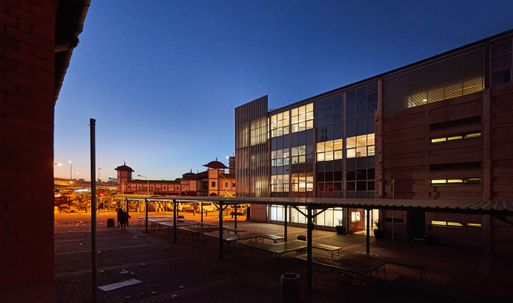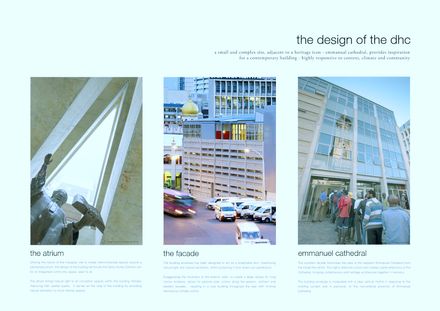
Dennis Hurley Centre (DHC)
ARCHITECTS
Ruben Reddy Architects PTY LTD
STATUS
Built
AREA
1000 sqft - 3000 sqft
BUDGET
$10M - 50M
YEAR
2015
LOCATION
Durban, South Africa
CATEGORY
Cultural › Religious Government + Health › Community Center
THE DENIS HURLEY CENTRE
A LIGHT IN THE HEART OF THE CITY
Denis Hurley fought for equality of all and social justice
In 1951, at age 31, he became the youngest Catholic bishop in the world and the archbishop of Durban
He was an outspoken opponent of apartheid and a driving force in a 1957 declaration by the bishops of South Africa that described apartheid as "intrinsically evil".
Archbishop Denis Hurley dedicated a great part of his live to defend the rights of the underprivileged, in an extremely difficult and politically turbulent period in the history of this country.
Located in the vibrant centre of Durban, a few steps from Warwick Triangle and Victoria Street Market, the Denis Hurley Centre was conceived as a contemporary facility to uplift and serve the community - a welcoming refuge to all community members regardless of background, faith or nationality.
The diverse and multifunctional character of the building reflects the complexity, vibrancy and dynamism of the context and its users - a catalyst to provide hope and aid to those most in need and a living memory of Archbishop Denis Hurley.
Utilising the nature of the triangular site to create interconnected spaces around a centralised atrium, the design of the building reinforces the Denis Hurley Centre’s aim for an integrated community space, open to all.
The building envelope has been designed to act as a breathable skin, maximising natural light and natural ventilation, whilst protecting it from direct sun penetration.
The highly reflective curtain wall creates subtle reflections of the Cathedral, bringing contemporary and heritage architecture together in harmony.
The Denis Hurley Centre is on small and complex site, adjacent to a heritage icon - Emmanual Cathedral, which provides inspiration the contemporary building - highly responsive to its context, climate and community.





















